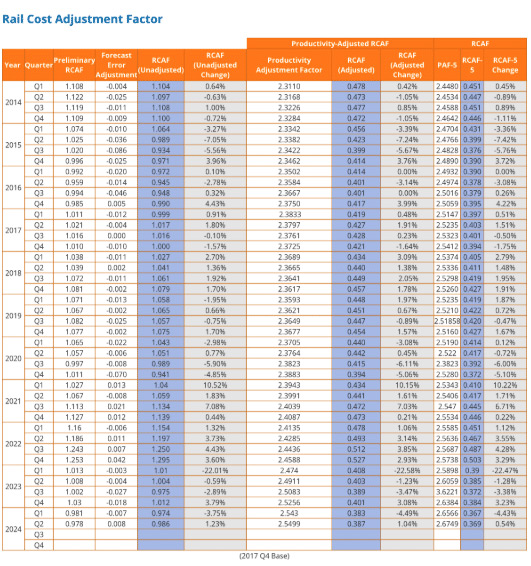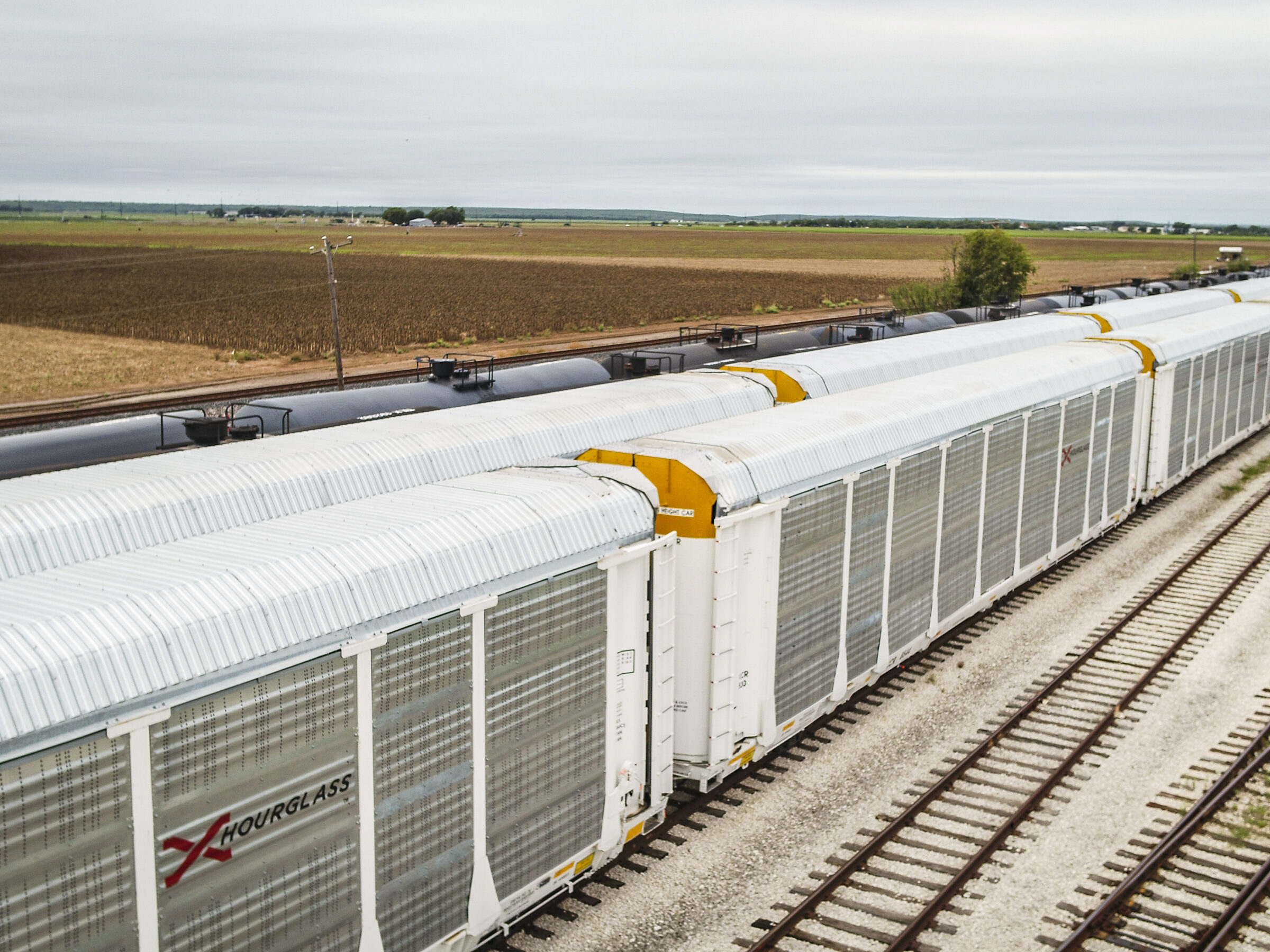Railroad Cost Indexes Explained
This article was authored in its original form by our partners at RSI Logistics.
The original post can be found here.
The Association of American Railroads (AAR) and the Surface Transportation Board (STB) are responsible for computing several indexes to gauge inflation, cost escalations, and productivity within the railway network. These indexes serve as important metrics for assessing the health and state of the rail industry. Often, rail contract rates are contingent upon a railroad cost index, and many contracts stipulate a predetermined minimum increase, irrespective of the indications of the cost index.
Consequently, rail rates may rise even in the absence of a corresponding increase in the index. That’s why, when shippers engage in contracts subject to railroad cost indexes, they should be aware of any compulsory minimum increase.
Two of the main railroad cost indexes outlined below are:
- The Rail Cost Adjustment Factor – RCAF
- The All-Inclusive Index Less Fuel – AII-LF
What Are Railroad Cost Indexes?
Railroad cost indexes are used to compare historical data with current costs related to fuel, inflation, labor, supplies, and overhead in the railway industry. Railroads and regulators use these indexes to set prices for their services and assess whether these prices are appropriate given the current economic conditions. The main indexes used for this purpose are the Rail Cost Adjustment Factor (RCAF) and the All-Inclusive Index Less Fuel (All-LF), which we will explain further.
The Rail Cost Adjustment Factor (RCAF)
The Rail Cost Adjustment Factor (RCAF) was established in response to the Staggers Act of 1980, and it is no longer the primary railroad cost index used in contracts. The RCAF is published quarterly by the Surface Transportation Board (STB) as required by law under 49 U.S.C. § 10708. It measures the inflation rate in railroad inputs such as labor, fuels, equipment, and supplies. The Association of American Railroads (AAR) calculates this number, which is then reviewed, approved, and published by the STB. One challenge with the RCAF is that it includes fuel costs, which are already addressed by the fuel surcharge rates imposed by the railroads.
There are five indexes associated with the RCAF:
- The Forecasted All-Inclusive Index — The RCAF’s projected price index is based on factors such as labor, fuel, materials, supplies, equipment rents, depreciation, interest, and other expenses. Importantly, these figures are presented as forecasts and may not represent the actual numbers.
- The Actual All-Inclusive Index — Two quarters following the calculation of the Forecasted All-Inclusive Index, the actual index is computed to assess forecast error. Generally, variations in labor, materials, supplies, and interest constitute the primary disparities between the actual index and the forecasted index.
- The RCAF (unadjusted) — The railroad industry cost index measures cost changes without factoring in rail productivity changes. It is calculated by adjusting the Forecasted All-Inclusive Index using the forecast error from the second prior quarter.
- The RCAF (adjusted) — The index reflects national average productivity changes based on a five-year moving average. It is derived by modifying the RCAF for five-year productivity gains as soon as the latest quarter of productivity data is available.
- The RCAF-5 — The index includes a five-year moving average productivity adjustment factor and reflects national average productivity changes as if a consistent five-year moving average had been applied since the productivity adjustment’s inception in 1989.
RCAF Unadjusted vs. RCAF Adjusted
There are two versions of the RCAF: the RCAF-Unadjusted and the RCAF-Adjusted. The difference is in consideration of productivity improvements. The RCAF-Unadjusted Index does not take productivity improvements into account, while the RCAF-Adjusted Index adjusts for productivity gains, enabling regulators to assess future rates relative to performance.

All-Inclusive Index Less Fuel
The All-Inclusive Index Less Fuel (All-LF) is the more widely used index in rail rate contracts today. It measures the RCAF-Unadjusted without the influence of fuel costs, which can change significantly. All other components match those used to calculate the RCAF, but productivity improvements are not factored into this index.

How Are Railroad Cost Indexes Used?
Railroad cost indexes are commonly utilized in contracts to implement rate adjustments. When discussing rail rates, it’s vital to account for the existing rate and the potential increases that could be enacted. Many contracts tied to a railroad cost index also feature a minimum, enabling the railroad to enforce an increase even if their expenses haven’t risen.
When dealing with shipping contracts, it’s important to keep in mind that shippers have the ability to negotiate the terms. Understanding the cost and rate trends and their implications for your business can be quite complex. For the latest railroad cost indexes, visit this page from RSI Logistics, a TrinityRail company.
If you’re uncertain about your rail rates or how to proceed, we’re happy to help. Reach out to our team to learn more.
IF YOUR BUSINESS RELIES ON RAIL, YOU CAN RELY ON US.
WHAT CAN WE DELIVER FOR YOU?
"*" indicates required fields
